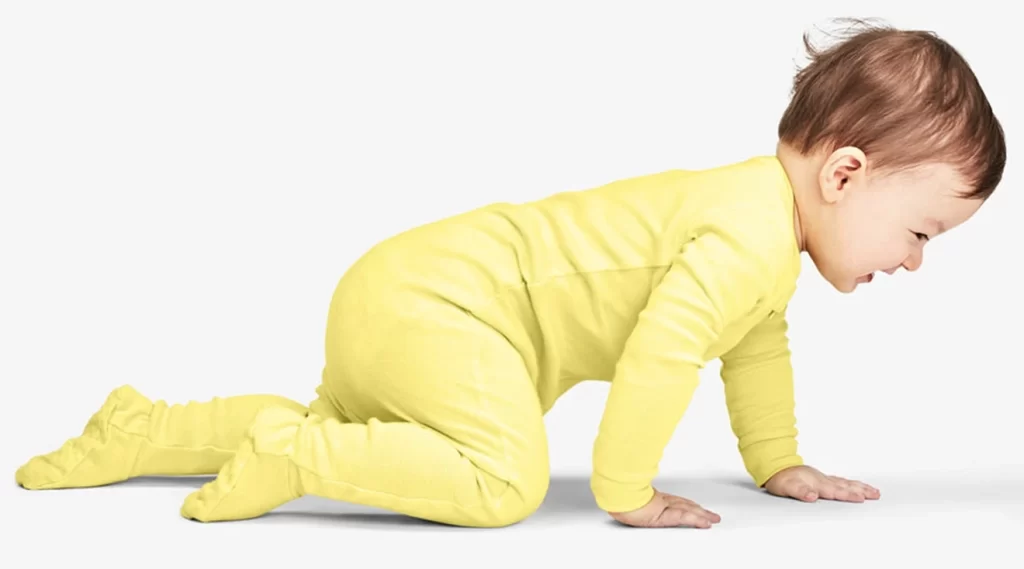
- +61 1300 704 750
- admin@parentinggenie.com.au
- PO Box 706, Townsville, QLD 4810

Genie Chat
Introduction
A peaceful and restful sleep is essential for a baby’s growth and well-being. As parents, ensuring a safe sleep environment is a top priority to give our little ones the best start in life. In this guide, we’ll delve into the key elements of creating a safe sleep sanctuary for your baby, providing valuable insights and practical tips to promote a secure and sound sleep routine.
1: Choose the Right Sleep Space

Select a firm and flat sleep surface for your baby, such as a crib, bassinet, or playpen. Ensure that the mattress fits snugly within the frame to prevent gaps where your baby could get stuck.
2: Follow the Guidelines of Safe Sleep
Place your baby Alone, on their Back, and in a Crib. Avoid co-sleeping, as it increases the risk of Sudden Infant Death Syndrome (SIDS).
3: Clear the Crib of Clutter

Keep the crib free of pillows, blankets, toys, and bumper pads. These items can pose suffocation hazards and increase the risk of overheating.
4: Optimal Room Temperature
Maintain a comfortable room temperature, usually between 68 to 72 degrees Fahrenheit (20 to 22 degrees Celsius). Dress your baby in light layers to prevent overheating.
5: Sleep Position Matters

Always place your baby on their back to sleep, whether it’s naptime or bedtime. This position reduces the risk of SIDS.
6: Consider Sleep Sacks
Sleep sacks or wearable blankets are a safe alternative to traditional blankets. They keep your baby warm without covering their face.
7: Avoid Loose Clothing

Dress your baby in a one-piece sleeper or pajamas that fit well. Loose clothing can bunch up around your baby’s face and increase the risk of suffocation.
8: Breastfeeding and Pacifiers
If you’re breastfeeding, consider offering the breast before naptime or bedtime. Pacifiers at sleep time have been linked to a reduced risk of SIDS. However, if you’re breastfeeding, introduce the pacifier after a few weeks.
9: No Smoking Near Baby
Keep your baby’s sleep environment free from smoke exposure. Exposure to tobacco smoke increases the risk of SIDS.
10: Regular Tummy Time
While awake and supervised, provide your baby with regular tummy time to strengthen their neck and upper body muscles.
11: Watch Out for Overheating
Avoid overdressing your baby, and make sure their sleep area is well-ventilated. Overheating can increase the risk of SIDS.
12: Create a Calming Bedtime Routine
Establish a soothing bedtime routine that signals it’s time to wind down. Activities like a warm bath, gentle massage, or soft lullabies can help your baby relax and prepare for sleep.
Conclusion
Creating a safe sleep environment is a loving gesture that ensures your baby’s well-being as they rest and grow. By following these practical guidelines, you’re taking crucial steps to reduce the risk of SIDS and promote healthy sleep habits. As parents, our commitment to providing a secure and nurturing sleep space will contribute to our baby’s overall development and happiness.
Subscribe to Virtual Parenting Hub for expert advice, actionable tips, and a supportive community of parents dedicated to raising healthy and happy babies. Join us in creating a safe and loving environment that fosters the best sleep experiences for your little one.
Also Read: Navigating Toddler Sleep Regressions: Understanding Common Disruptions in Sleep Patterns